Cover image
Title page
Disclaimer
Table of Contents
Copyright
Dedicated To
Contributors
Preface
VOLUME 1
Section I. Genetics and Embryology
- Basic Genetic Principles
- Epigenetics
- Basic Embryology
- Regulation of Embryogenesis
- The Extracellular Matrix in Development
- Angiogenesis
- Prenatal Diagnosis
Section II. Placenta and Intrauterine Environment
- Placental Development
- Regulation of the Placental Circulation
- Mechanisms of Transfer Across the Human Placenta
- Endocrine and Paracrine Function of the Human Placenta
- Intra-Amniotic Infection/Inflammation and the Fetal Inflammatory Response Syndrome
- Fetal Origins of Adult Disease: A Classic Hypothesis With New Relevance
- Placental Function in Intrauterine Growth Restriction
Section III. Developmental Pharmacology
- Basic Pharmacologic Principles
- Principles of Pharmacokinetics
- The Physiology of Placental Drug Disposition
- Pharmacogenomics
- Drug Distribution in Fetal Life
- Drug Transfer During Breastfeeding
Section IV. Intrauterine and Postnatal Growth
- Placental and Fetal Circulatory and Metabolic Changes Accompanying Fetal Growth Restriction
- Endocrine Factors Affecting Neonatal Growth
- Human Milk Composition and Function in the Infant
- Physiology of Lactation
Section V. Perinatal Iron, Mineral, and Vitamin Metabolism
- Fetal and Neonatal Iron Metabolism
- Fetal and Neonatal Calcium, Phosphorus, and Magnesium Homeostasis
- Zinc in the Fetus and Neonate
- Vitamin A Metabolism in the Fetus and Neonate
- Vitamin E Nutrition in Pregnancy and the Newborn Infant
- Vitamin K Metabolism in the Fetus and Neonate
Section VI. Lipid Metabolism
- Maternal-Fetal Transfer of Lipid Metabolites
- Brown Adipose Tissue: Development and Function
- Lipids as an Energy Source for the Premature and Term Neonate
- Ketone Body Metabolism in the Neonate
- Long-Chain Polyunsaturated Fatty Acids in Neurodevelopment
Section VII. Carbohydrate Metabolism
- Glucose Metabolism in the Fetus and Newborn, and Methods for Its Investigation
- Oxygen Consumption and General Carbohydrate Metabolism of the Fetus
- Role of Glucoregulatory Hormones in Hepatic Glucose Metabolism During the Perinatal Period
- Cell Glucose Transport and Glucose Handling During Fetal and Neonatal Development
Section VIII. Protein Metabolism
- General Concepts of Protein Metabolism
- Placental Transfer and Fetal Requirements of Amino Acids
Section IX. Thermoregulation
- Temperature Control in Newborn Infants
Section X. Skin
- Structure and Development of the Skin and Cutaneous Appendages
- Physiologic Development of the Skin
Section XI. Fetal and Neonatal Cardiovascular Physiology
- Cardiovascular Development
- Developmental Electrophysiology in the Fetus and Neonate
- Developmental Biology of the Pulmonary Vasculature
- Development of the Gastrointestinal Circulation in the Fetus and Newborn
- Physiology of Congenital Heart Disease in the Neonate
- Regulation of Cardiovascular Function During Fetal and Newborn Life
- Nutritional and Environmental Effects on the Fetal Circulation
- Mechanisms Regulating Closure of the Ductus Arteriosus
- Umbilical Circulation
- Fetal and Placental Circulation During Labor
Section XII. The Lung
- Normal and Abnormal Structural Development of the Lung
- Regulation of Alveolarization
- Physiologic Mechanisms of Normal and Altered Lung Growth Before and After Birth
- Molecular Mechanisms of Lung Development and Lung Branching Morphogenesis
- Regulation of Liquid Secretion and Absorption by the Fetal and Neonatal Lung
- Upper Airway Structure: Function, Regulation, and Development
- Regulation of Lower Airway Function
- Functional Development of Respiratory Muscles
- Mechanics of Breathing
- Pulmonary Gas Exchange in the Developing Lung
- Oxygen Transport and Delivery
- Control of Breathing in Fetal Life and Onset and Control of Breathing in the Neonate
- Basic Mechanisms of Oxygen Sensing and Adaptation to Hypoxia
- Evaluation of Pulmonary Function in the Neonate
- Mechanisms of Neonatal Lung Injury
- Impaired Lung Growth After Injury in Preterm Lung
- Antenatal Factors That Influence Postnatal Lung Development and Injury
- Regulation of Pulmonary Circulation
Section XIII. Surfactant
- Historical Perspective
- Developmental Biology of Lung Stem Cells
- Surfactant Homeostasis: Composition and Function of Pulmonary Surfactant Lipids and Proteins
- Structure and Development of Alveolar Epithelial Cells
- Regulation of Surfactant-Associated Phospholipid Synthesis and Secretion
- Antenatal Hormonal Therapy for Prevention of Respiratory Distress Syndrome
- Surfactant Treatment
- Genetics and Physiology of Surfactant Protein Deficiencies
Section XVI. Physiology of Gastrointestinal Tract in the Fetus and Neonate
- Trophic Factors and Regulation of Gastrointestinal Tract and Liver Development
- Organogenesis of the Gastrointestinal Tract
- Development of Gastric Secretory Function
- Development of the Enteric Nervous System and Gastrointestinal Motility
- Development of the Endocrine and Exocrine Pancreas
- Digestive-Absorptive Functions in Fetuses, Infants, and Children
- The Developing Microbiome of the Fetus and Neonate: A Multiomic Approach
Section XV. Liver and Bilirubin Metabolism
- Organogenesis and Histologic Development of the Liver
- Bile Acid Metabolism During Development
- Fetal and Neonatal Bilirubin Metabolism
- Hereditary Contributions to Neonatal Hyperbilirubinemia
- Mechanistic Aspects of Phototherapy for Neonatal Hyperbilirubinemia
VOLUME 2
Section XVI. The Kidney
- Development of the Kidney: Morphology and Mechanisms
- Functional Development of the Kidney in Utero
- Development and Regulation of Renal Blood Flow in the Neonate
- Postnatal Development of Glomerular Filtration Rate in Neonates
- Renal Transport of Sodium During Development
- Potassium Homeostasis in the Fetus and Neonate
- Role of the Kidney in Calcium and Phosphorus Homeostasis
- Transport of Amino Acids in the Fetus and Neonate
- Organic Anion Transport in the Developing Kidney
- Concentration and Dilution of Urine
- Urinary Acidification
- Response to Nephron Loss in Early Development
Section XVII. Fluid and Electrolyte Metabolism
- Fluid Distribution in the Fetusand Neonate
- Regulation of Acid-Base Balance in the Fetus and Neonate
Section XVIII. Developmental Hematopoiesis
- Developmental Biology of Hematopoietic Stem Cells
- Neutrophil Granulopoiesis and Homeostasis
- Developmental Erythropoiesis
- Developmental Megakaryopoiesis
Section XIX. Hemostasis
- Developmental Hemostasis
- Platelet–Vessel Wall Interactions
Section XX. Developmental Immunobiology
- Host Defense Mechanisms Against Bacteria
- Host Defense Mechanisms Against Fungi
- Host Defense Mechanisms Against Viruses
- T-Cell Development
- B-Cell Development
- Mononuclear Phagocyte System
- Normal and Abnormal Neutrophil Physiology in the Newborn
- The Complement System of the Fetus and Newborn
- Cytokines and Inflammatory Response in the Fetus and Neonate
- Immunology of Human Milk
- Neonatal Pulmonary Host Defense
Section XXI. Neurology
- Development of the Nervous System
- Mechanisms of Cell Death in the Developing Brain
- Development of the Blood-Brain Barrier
- Trophic Factor, Nutritional, and Hormonal Regulation of Brain Development
- Developmental Aspects of Pain
- Cerebellar Development—The Impact of Preterm Birth and Comorbidities
- Electroencephalography in the Preterm and Term Infant
- Intraventricular Hemorrhage in the Neonate
- Pathophysiology of Neonatal White Matter Injury
- Cellular and Molecular Mechanisms of Neonatal Brain Injury and Neuroprotection
- Neuroprotective Therapeutic Hypothermia
Section XXII. Special Sensory Systems in the Fetus and Neonate
- Early Development of the Human Auditory System
- Development of Olfaction and Taste in the Human Fetus and Neonate
Section XXIII. Musculoskeletal
- The Growth Plate: Embryologic Origin, Structure, and Function
- Ontogenesis of Striated Muscle
Section XXIV. Endocrine Function
- Hypothalamus: Neuroendometabolic Center
- Growth Factor Regulation of Fetal Growth
- Growth Hormone, Prolactin, and Placental Lactogen in the Fetus and Newborn
- Luteinizing Hormone and Follicle-Stimulating Hormone Secretion in the Fetus and Newborn Infant
- Development of the Hypothalamus-Pituitary-Adrenal Axis in the Fetus
- Fetal and Neonatal Adrenocortical Physiology
- Fetal and Neonatal Thyroid Physiology
Section XXV. Ovary and Testis
- Genetics of Sex Determination and Differentiation
- Differentiation of the Ovary
- Testicular Development and Descent
Section XXVI. Pathophysiology of Neonatal Diseases
- The Pathophysiology of Twin-Twin Transfusion Syndrome, Twin-Anemia Polycythemia Sequence, and Twin-Reversed Arterial Perfusion
- Physiology of Neonatal Resuscitation
- Pathophysiology of Neonatal Sepsis
- Pathophysiology of Neonatal Hypoglycemia
- Pathophysiology of Cardiomyopathies
- Pathophysiology of Persistent Pulmonary Hypertension ofthe Newborn
- Pathophysiology of Shock in theFetus and Neonate
- Pathophysiology of Apnea of Prematurity
- Pathophysiology of Respiratory Distress Syndrome
- Pathophysiology of Meconium Aspiration Syndrome
- Pathophysiology of Bronchopulmonary Dysplasia
- Pathophysiology of Ventilator-Dependent Infants
- Pathophysiology of Gastroesophageal Reflux
- Pathophysiology and Prevention of Neonatal Necrotizing Enterocolitis
- Pathophysiology of Kernicterus
- Pathophysiology of Neonatal AcuteKidney Injury
- Pathophysiology of Edema
- Pathophysiology of Retinopathy of Prematurity
- Pathophysiology of Neonatal Hypoxic-Ischemic Brain Injury
- Pathophysiology of Neonatal Acute Bacterial Meningitis
- Pathophysiology of NeuralTube Defects
- Pathophysiology of Preeclampsia
- Pathophysiology of Preterm Birth
- Pathophysiology of Chorioamnionitis: Host Immunity and Microbial Virulence
- Pathophysiology of Genetic Neonatal Disease
- Genetic Variants and Neonatal Disease
Index

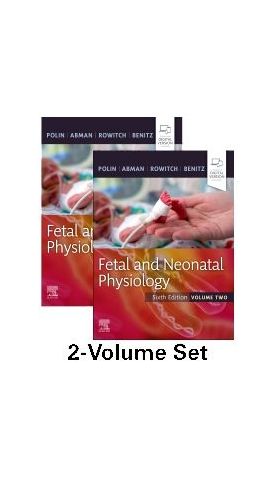

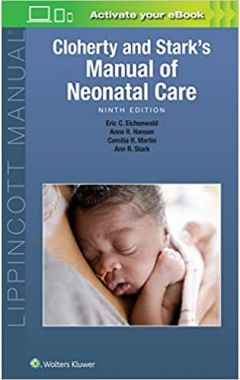

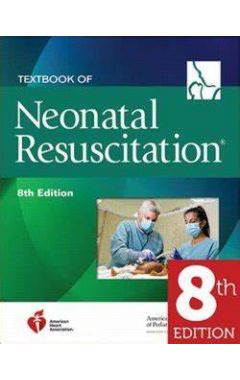


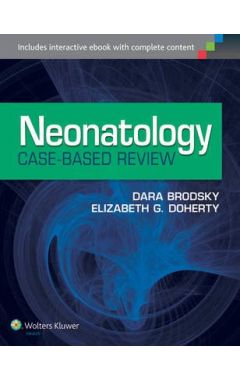
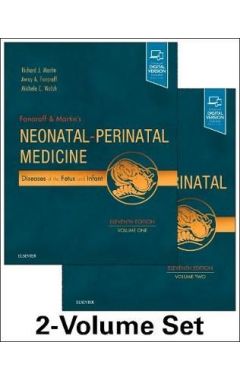

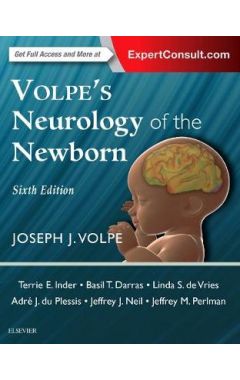
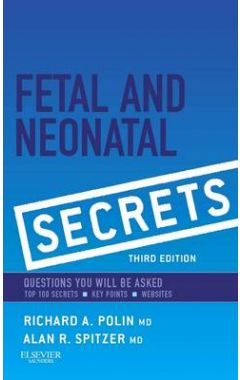


Login and Registration Form